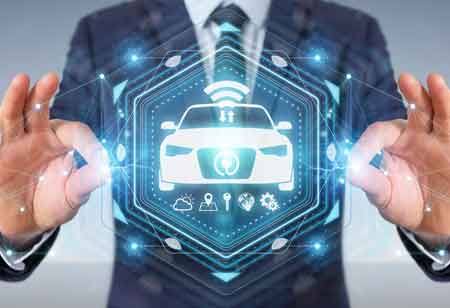THANK YOU FOR SUBSCRIBING
Steps of Automotive Procurement
Unstructured data can now be cataloged which can accurately predict user’s behavior, preferences, and even relationships. The data-centric procurement applications can be matched with ‘levels’ of autonomous driving

By
Apac CIOOutlook | Friday, December 20, 2019
Stay ahead of the industry with exclusive feature stories on the top companies, expert insights and the latest news delivered straight to your inbox. Subscribe today.
Unstructured data can now be cataloged which can accurately predict user’s behavior, preferences, and even relationships. The data-centric procurement applications can be matched with ‘levels’ of autonomous driving
Fremont, CA: The collaboration between the human and machine is shifting, and Artificial Intelligence (AI) has been the driving force behind that shift. With entrenched ways of thinking and operating, domains of service procurement is also changing. Data is the foundation of any successful initiative of AI. Hence for successful implementation of AI, accumulation of data is required, which can be done by structured data collection platforms that allow making correlations and inferences.
After examining the evolution of social media platforms and tracking exponential data, it was found out that unstructured data can now be cataloged, which can accurately predict user's behavior, preferences, and even relationships. Today, the immense proprietary of data sets lay with industries like search engines, marketing, and social media platforms, and these industries can help develop Deep Learning to a large extent. The data-centric procurement applications can be matched with 'levels' of autonomous driving:
Level 1: No Automation
Early users of automated procurement have a unique opportunity to take advantage of the cutting edge, gathering data and feedback in an organized form that works for them – and sets a bar for their industry.
Level 2: Partial Automation
Vehicles can steer, accelerate, and can even apply brakes in some situations; still, the human drivers must be alert enough to take control of the vehicle in an emergency.
The AI-based platform that gathers data can now use Machine Learning to make suggestions based on how one has acted historically. Pattern-matching and recognition make the best guess based on available information. Data volume starts making differences from here, and at this initial stage, procurement involves 'small data' but of high value.
Level 3: High Automation
Because of cumulative data, the vehicles, at this stage, can assume all driving tasks under all conditions without any human help. But it is always advisable to have a passenger inside the vehicle to take control of any inevitable situation.
Machine Learning begins to understand signals by combining data leads, where data of one user's response gets combined with many. Correlations between historical segregated data and experiences across the entire organization help machines to integrate it.
Level 4: Full Automation
The performance of autonomous cars in diverse situations has built up enough empirical evidence that they are able to execute under any circumstance. This performance crosses a wide range, and there is no need for human intervention at all. The same will be applicable for service procurement. While adopting full end-to-end AI, well-informed assumptions about what the client wants to do are served up proactively.
Hence, the role of procurement is shifted from tactical to strategic, acting as a partner to business stakeholders.
See also: Top Procurement Solution Companies





